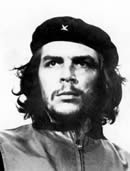1. 71% or 770 million people are below 35 years of age. Indians are young.
2. 29 million people are born every year, 10 million die per year, population increase 1.8% per year.
3. India has 970,000 schools, China has 1,800,000.
4. 6% are the ones that cross the 10+2 stage, (Educational ‘Line of Control’) which is our so called educated youth, go in for a regular college degree which may not be very relevant in today’s context for the sake of employment generation and National GDP enhancement.
5. 72% of all graduates from the 15,600 colleges are
Arts graduates. Balance 28% in Science, Commerce,
Engineering, I.T., Medical, Law, Management and special
subjects.
6. India has 372 universities, China has 900 & Japan has 4000.
7. While 95% of the world youth between 15 to 35 years of age learn a vocation, a skill or a trade, with a choice of 2,500 vocational education and training (VET) programs, we in India have only identified about 71 trades, after 58 years of Independence and hardly 2% of the population goes for formal VET training!
8. India has 11,000 ITI’s and VET schools, China has 500,000 senior secondary vocational eduacation and training schools.
9. We can get engineers and MBA’s in India but no carpenters, plumbers, drivers, repairmen and other skilled personnel as per international standards!
10. Information Technology, Software or I.T. is the only exception, possibly due to 50,000 or more private I.T. training centers spread across the country.
11. I.T. & Software is only 1.5% of the world’s GDP. India’s present share is about 5%. For rapid economic growth and employment generation we need to concentrate on the balance 95% of the Economy & Enterprise and make it world class.
12. 300* million unemployed / employable age* and only 45 million have actually registered with employment offices with little or no hope of getting employment (our estimates)*.
13. Of all new employment generated, 1% are Government jobs, 2% are in the ‘organized sector’ and the balance 97% in the ‘unorganized sector‘
14. 1.7% of the entire population, viz. 18 million people work for the Central & State Government; another 9 million work in the ‘private organized sector‘, a total of 2.6% of the population.
15. While MP’s, MLA’s and Municipal Councilors and the village Panchayats, can only be elected for a maximum of 5 years, the officials, and government employees enjoy life long benefits of employment, in spite of their performance.
16. 600 million illiterate people, based on the international definition of the 3R’s (reading, writing and arithmetic, education up to primary level or Class 5th). (our esitimates) as per Goverment of India is 63% literate. China is 93% literate.
17. The Indian definition of literacy is based on survey of people
“If you can write your name, you are literate”; nobody has seriously ever challenged this definition! “
18. 260 million live below the Government of India’s definition of the Poverty Line of Rs.11(Rural) to Rs 14(Urban) per day! (based on being able to buy enough rice and wheat from the Public Distribution System / Ration Shops, which has food value of 2,200 K calories per day).
19. 450 million* live below the poverty line definition of the World Bank’s old definition of @ US$ 1 per day per person, or US$ 365 per year. 700 million* people below the poverty line definition of the World Bank’s new definition of @ US$ 2 per day per person, or US$ 730 per year. (our estimates)*
20. Only 5% of Indians can speak fluent English
As per the article published in The Washington Post.
“India has a reputation as a nation of fluent English speakers, but by many estimates, only 5 percent of the population merits that description.”
21. India is probably at the bottom of the heap, as far as the human development index is concerned such as infant mortality, child care, malnutrition, women’s health, disease, health, clean water, etc.
22. As per www.Loksatta.org, about Rs. 2200 crores are spent every day, at the Centre and State level, both on revenue as well as capital account in order to Govern INDIA. To improve Governance we need to insure +95% of Literacy, a large number of active Citizen Groups and maximum use of The Right to Information Act!
23. More than a million Indians are millionaires, yet most Indians live on less than two dollars a day. An estimated 35% of India’s population lives below the poverty line.
Pavan


































.jpg)





.jpg)


.jpg)






